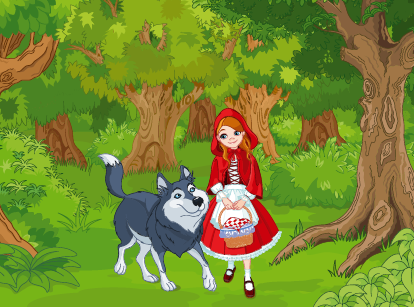The Purpose of Fairy tales
Before the internet and television, stories were used to entertain and teach children valuable lessons about life. Stories taught children how to behave appropriately towards their friends, family, and society.
Goldilocks is a classic tale of a destructive little girl who goes into the bears’ house without permission.
She proceeds to use and destroy the property in the house.
The moral of the story was that people must have self-control and respect the property of others. One’s actions can hurt other people if they are not considerate.
The Belgian story of Little Red Riding Hood is about a little girl who is warned by her mother not to talk to strangers. As the girl walks to her grandmother’s house, she comes across a wolf. Rather than remembering her mother’s warning, she tells the wolf she will visit her grandmother’s house. Trouble comes to all the characters in the story after that.
The moral of the story is that children should listen to their parents and not talk to strangers.
In the Boy Who Cried Wolf, a young shepherd watches a flock of sheep. Out of boredom, he cries out, ‘Wolf! Wolf!’. The villagers rush to help the young boy, who only laughs at their panic. The boy cries wolf several times. Finally, a wolf really does come, and again the shepherd calls for help. Only this time, the villagers don’t believe him and the wolf eats all the sheep. The warning of the story is that people shouldn’t lie. If they lie often, no one will believe them when they tell the truth.
Fairy tales teach children that bad behaviour such as lying, stealing, being rude, or being greedy have consequences. It’s important that children learn appropriate behaviour so they will have successful lives.

